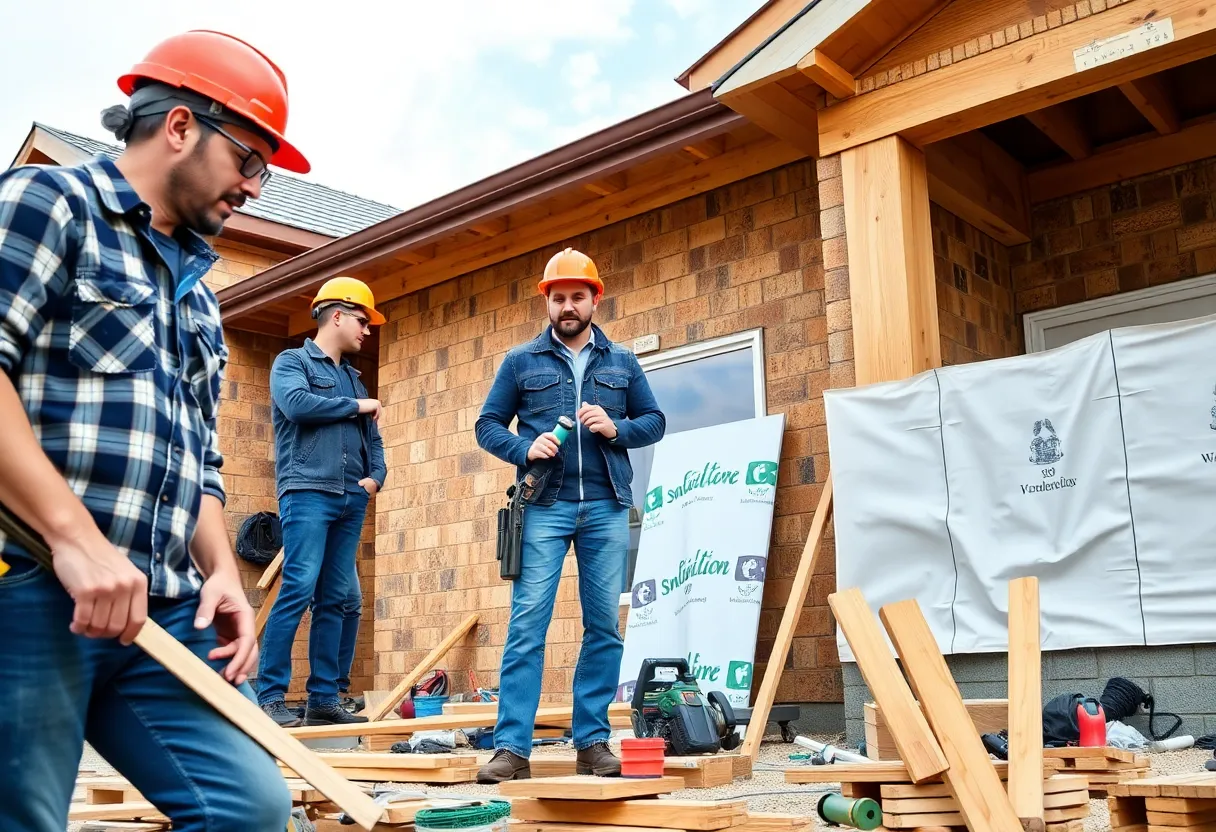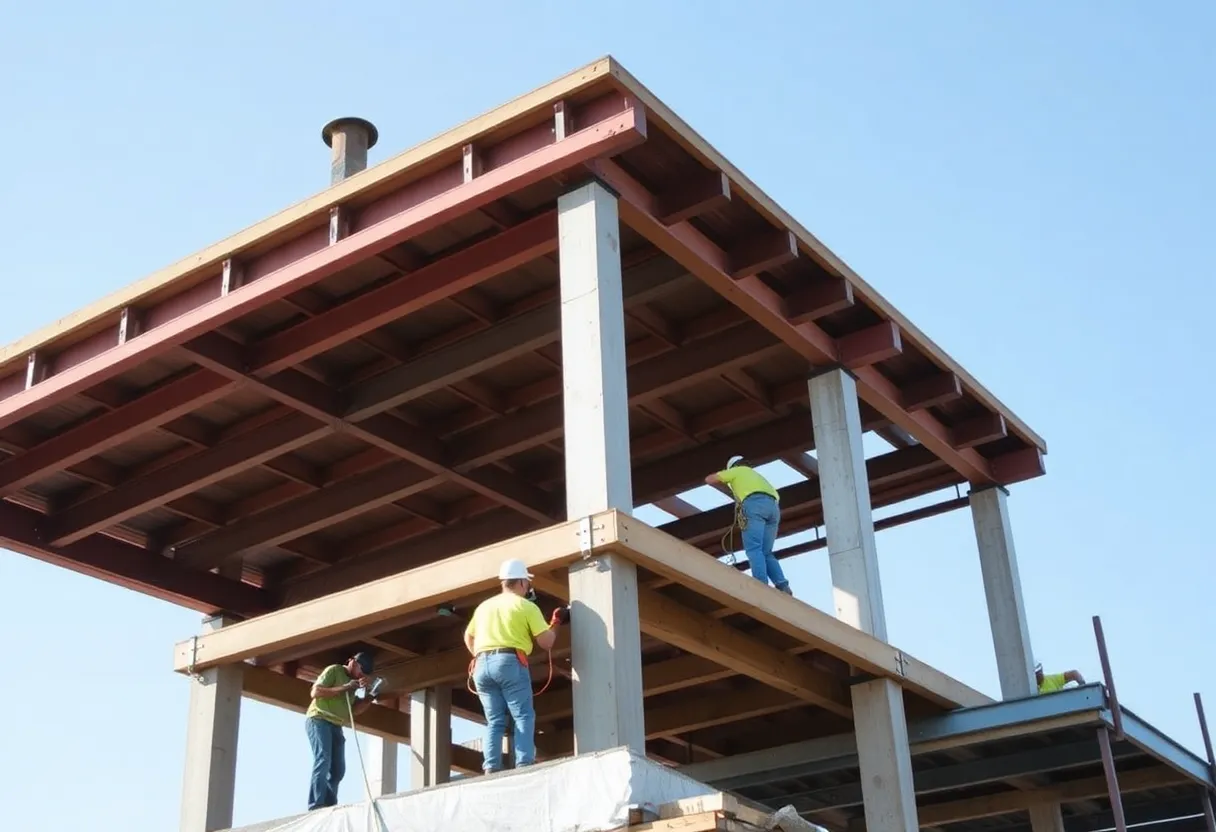United States, August 28, 2025
News Summary
The residential construction sector is seeing a surge in independent contractors, with nearly 80% operating as self-employed entities. Recent data indicates that independent contractors play a vital role in managing and executing construction projects, significantly impacting the workforce and financial landscape of the industry. Despite their prevalence, many face challenges in terms of profitability and revenue generation. Understanding the dynamics of this shift can inform better support strategies for these small businesses in the construction sector.
Independent Contractors Take the Lead in Residential Construction
The residential construction industry is dominated by independent contractors, with nearly 80% of home builders and specialty trade contractor firms operating as self-employed entities, according to recent data. This trend, highlighted by information from the 2022 Economic Census and Nonemployer Statistics from the National Association of Home Builders (NAHB), indicates a significant shift in how construction projects are managed and executed.
Characteristics of Independent Contractors
In total, there are over 813,000 nonemployer firms in residential building construction, which represent close to 80% of all establishments within this sector. Notably, 63% of home builders and two out of three specialty trade contractors reported generating less than one million dollars in total business receipts annually. This figure underscores the financial challenges many independent contractors face.
Financial Overview
Independent contractors earn varying annual receipts based on their specific areas of construction; residential builders average around $103,000, while specialty trade contractors make less than $70,000 per year. The land subdivision sector shows a more encouraging picture, with independent contractors averaging business receipts of approximately $288,000.
Size of the Market
Independent contractors play a crucial role in land subdivision, where more than 9,000 such professionals represent 68% of all firms in this space. Among specialty trade contractors, over 1.9 million independent contractors constitute 79% of the total establishments.
Workforce Impact
Nonemployer firms are significant contributors to the workforce in residential construction, accounting for almost half of full-time employees in this area. They make up 26% of the workforce in land subdivision and 28% in specialty trades. Despite their large presence, nonemployer firms generate only 12% of the overall sales and receipts from residential construction and land subdivision combined.
Small Business Dynamics
Most businesses in residential construction fit the definition of small businesses according to U.S. Small Business Administration (SBA) standards. Currently, SBA size limits are set at $45 million for builders, $34 million for land subdivision, and $19 million for specialty trade contractors. Almost all remodelers and single-family builders qualify under these definitions, along with at least 98% of land developers and 96% of specialty trade contractors.
Revenue Statistics and Challenges
Although approximately 45% of home builders report annual sales exceeding $1 million, many small businesses struggle to reach profitability. 75% of remodeling establishments, 63% of land developers, and 59% of specialty trade contractor companies earn less than $1 million in receipts. In contrast, multifamily general contractors often report significantly higher revenues, with 10% indicating annual sales between $10 million and $25 million, and an additional 11% earning between $25 million and $100 million in 2022.
Conclusion
The landscape of the residential construction sector is largely shaped by independent contractors, who despite their prevalence, often face financial limitations. Understanding the dynamics of this sector can provide valuable insights for policymakers and stakeholders looking to support these small businesses.
FAQ Section
What percentage of contractors in residential construction are independent?
Nearly 80% of home builders and specialty trade contractors operate as self-employed independent contractors.
How much do independent contractors in residential construction typically earn?
Independent contractors in residential building construction have average annual receipts of around $103,000, while specialty trade contractors earn under $70,000.
What is the role of nonemployer firms in the residential construction workforce?
Nonemployer firms account for nearly half of full-time employees in residential building construction, 26% in land subdivision, and 28% in specialty trades.
Key Features of the Post
| Feature | Statistics |
|---|---|
| Percentage of Contractors as Independent | 80% |
| Average Earnings of Builders | $103,000 |
| Average Earnings of Specialty Trade Contractors | $70,000 |
| Independent Contractors in Land Subdivision | 9,000 (68%) |
| Small Business Qualification | Majority |
| Contractors Reporting Over $1 Million | 45% |
Deeper Dive: News & Info About This Topic
Additional Resources
- LBM Journal: Most Home Builders Are Small Businesses per NAHB
- Christian Science Monitor: Modular Construction and Housing Shortage
- Los Angeles Times: Tech Billionaire’s Affordable Housing Initiative
- AZ Central: Phoenix Construction Company’s Nonprofit Projects
- Encyclopedia Britannica: Construction
Author: Construction FL News
The FLORIDA STAFF WRITER represents the experienced team at constructionflnews.com, your go-to source for actionable local news and information in Florida and beyond. Specializing in "news you can use," we cover essential topics like product reviews for personal and business needs, local business directories, politics, real estate trends, neighborhood insights, and state news affecting the area—with deep expertise drawn from years of dedicated reporting and strong community input, including local press releases and business updates. We deliver top reporting on high-value events such as the Florida Build Expo, major infrastructure projects, and advancements in construction technology showcases. Our coverage extends to key organizations like the Associated Builders and Contractors of Florida and the Florida Home Builders Association, plus leading businesses in construction and legal services that power the local economy such as CMiC Global and Shutts & Bowen LLP. As part of the broader network, including constructioncanews.com, constructionnynews.com, and constructiontxnews.com, we provide comprehensive, credible insights into the dynamic construction landscape across multiple states.





